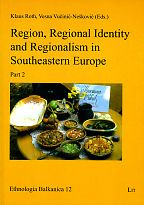The Regional and the Subgroup Features of the Kinship Terminology of Roma/Gypsies in Bulgaria
The Regional and the Subgroup Features of the Kinship Terminology of Roma/Gypsies in Bulgaria
Author(s): Alexey PamporovSubject(s): Anthropology
Published by: LIT Verlag
Keywords: kinship terminology; Roma; Gypsies; Bulgaria; Romany groups; marriage;
Summary/Abstract: The paper discusses the kinship terminology of the five main Roma groups living in the Northwestern, Southwestern and Central Southern regions of Bulgaria. The comparison between the different subgroup terminologies at a regional level indicates a cognatic pattern of the Romany kinship, as far as it places no distinction between patrilineal and matrilineal relatives. The parental siblings are distinguished only by gender. The Roma use the same signifier as far as to the second-degree relatives of direct descent (grandchildren) and to the third-degree collateral relatives in the first descending generation (nephews), and make only a gender distinction. All in-law relatives in the generation of the ego as well as in the descending generations are grouped together into a category split into two by gender. In fact, the Roma kinship terminology is a clear example of a lineal (or “Eskimo type” in Murdock’s classification) kinship structure. The terms vary between the subgroups mainly in the words used for the members of the nuclear family. In all other kinship categories the regional influence is stronger than the subgroup influence. Together with the clear “Eskimo type” structure, the patterns of influence suggest that instead of the larger kinship group, as often claimed, the nuclear family is the main social unit and pillar of Roma identity.
Journal: Ethnologia Balkanica
- Issue Year: 2008
- Issue No: 12
- Page Range: 79-95
- Page Count: 17
- Language: English
- Content File-PDF

